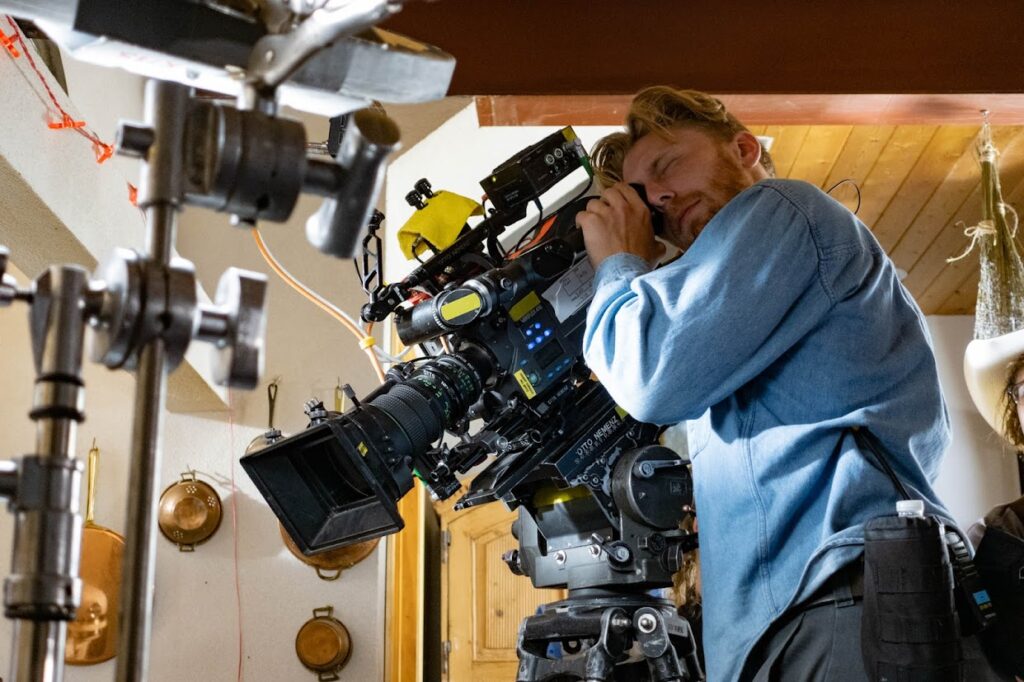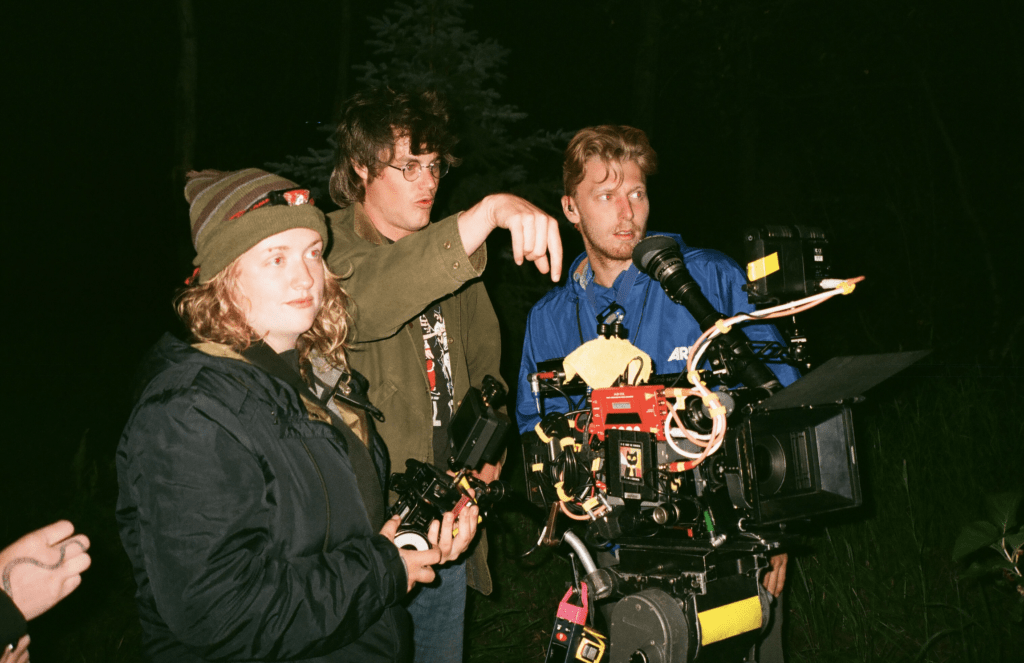Cannes Premiere: Cinematographer Mitchell ’19 on Crafting Epic Adventure

Jake Mitchell ’19 is the cinematographer of Riddle of Fire, which premiered in the Directors’ Fortnight at the Cannes Film Festival on May 20. Mitchell spoke with Emerson Today about the artistic and technical aspects of cinematography, the importance of reputation, and Emerson.
Q: How has your Emerson experience helped professionally and/or personally?
When I came to Emerson, I was suddenly dropped into an enormous community of filmmakers, a resource I did not have when growing up in Ohio. Every weekend was an opportunity to crew on projects, get more experience, and more importantly meet other filmmakers.
The most valuable thing I took from Emerson was my network. To this day, the people I shot little thesis projects or small music videos for are the same people hiring me on shoots in LA. The alumni network is incredibly strong and you will always find yourself surrounded by the Emerson mafia when on set.
Q: What do you like best about being a cinematographer?
As a cinematographer, it’s your job to execute the creative vision of the director, making it the ultimate fusion of art and technique. I get to maintain an important connection to a film’s story and have a great influence on its storytelling and perception by the viewer, all through very technical decisions and craft. Each shoot is a challenge to create something beautiful.
Secondly, I have always enjoyed leadership roles. As the [director of photography], you are at the head of the camera and lighting departments, and decisions with how you manage your crew will greatly affect your end product, as well as your reputation.
Q: How would you describe the cinematography style you used for Riddle of Fire?
From the very beginning, director Weston Razooli described Riddle of Fire as a “neo-fairytale” referencing many children’s books, fables, and even designs of old board games. This resonated with me, as references specifically from other mediums usually develop unique visual languages for film. Taking these inspirations to heart, we focused on a dreamy, low-contrast, high-saturation image.
Through testing, we found a rich 16mm negative would render incredibly dense and beautiful color. I was adamant to capture clean negatives and sharp grain with each shot, so everything was overexposed between 2/3 to 1 stop and we shot on the sharpest lenses possible at ideal apertures. Additionally, I was very selective in what stocks we used, opting for the tightest grained films depending upon the scenario and time of day. This method, on top of using a polarizer, accomplished clean saturation on day exteriors, limited overexposed specular highlights on foliage, and cut through environmental haze in the sky.
Finally, we cropped for a 2.35:1 cinemascope aspect ratio, emphasizing the epic adventure that is the story and doing justice to the whimsical Utah landscape.

Q: How does the cinematography of Riddle of Fire vary from other movies you’ve been the cinematographer?
Every project I do is completely different by nature, but I also attempt to grow and learn with each project by trying new techniques and improving upon my approach. In particular, one of the challenges we faced was in our incredibly tight schedule. We were shooting at least four pages a day, and sometimes up to eight. If you’re familiar with narrative, this is a breakneck pace, and gives very little room to shoot a variety of coverage and go for extra takes. I had to find ways to work smarter and more efficient, while maintaining a consistent level of quality throughout the shoot.
One of the decisions we made after day one was to only shoot on our zoom lens, as this would save valuable time in changing lenses and we moved the camera around much less. Originally, our plan was to shoot on prime lenses as they were much sharper and could be used at a lower aperture, but we had to compromise. In this instance, optical quality was not as important as having more time for shooting coverage. In the end, the zoom lens we used was still very clean and ultimately contributed to the way in which the edit comes together from a coverage stand point.
Q: What advice would you give to aspiring cinematographers?
Remember that your reputation is the most important thing you have. A good reputation will consistently bring you new opportunities, contacts, and open doors to each next step in your career. Always put forth your best self and your best effort, it will pay off majorly in the long run. This is a people and relationship-based business, and those who are talented but have no network will not work as much as someone with no talent and a great network.
Additionally, many young DPs I meet are obsessed with finding their “style”. While many great DPs can be identified just through their work, the obsession with style is completely in opposition to the responsibilities of the cinematographer. You must be as flexible as possible on the projects that come your way, always serving the particular script and the story at hand. Learn to craft completely different looks than your last project, and accept as much diversity of work that comes your way.
Q: If you were interviewing yourself, what would you ask?
I would ask myself about taxes. Unfortunately, I received very little information about the possibilities and business structures, as well as accounting practices for a freelancer. While this is an artistic medium, you cannot overlook the importance of understanding your finances and treating yourself as a business, as well as the opportunity that investing into gear can provide for your career.
Q: Is there anything else you’d like to share about yourself, your time at Emerson, et cetera?
Now that I’m several years into my career and looking back, I would’ve attempted to do even more projects at Emerson. Every small thesis or little weekend project I shot helped me meet new collaborators and hone my skills. To this day, many of my collaborators from college make up my network. And when it comes to making it as a freelancer in the industry, you need to have a great reputation by word of mouth and put yourself out there as much as you can. Much like anything in life, the film school experience is what you make it. Output is equal to input.
Finally, I could not have shot Riddle of Fire had it not been for the incredible celluloid resources available at Emerson. I personally believe no other film schools in America compare when it comes to teaching students how to shoot on film. Some have even outright banned its use in thesis films. So, if you’re a student studying cinematography, take all of the classes with film that you can, even the darkroom photography classes. I hope Emerson will continue its dedication to celluloid.
Categories